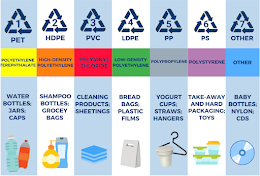Plastics
Plastics can be divided into two general types according to their origin:
-Natural Plastics: obtained directly from vegetables or animal sources. For example, latex and cellulose are produced by plants, and casein is a protein that is found in milk.
-Synthetic plastics: Come from oil, Most plastics that we use today are synthetic.
Properties:
1. Good insulator
2. Combustible
3. Ductiles and malleable
4.High mechanical strength
5. Great elasticity
6. Flexible and light
7. Great plasticity
8. Most of them are recyclebles
9. Resistant to corrosion
10. They are very economic
Types of plastics
Thermoplastics: you can heat them and mould them as many times as you want. Easy to recycle.
Thermosettings: con only be heated and moulded once and the process cannot be repeated.
Elastomers: they stretch a lot when applaying forces and can recover their original shape after suffering huge deformations.
Enviroment problems
1- Crude oil is a finite resource, it’s going to run out one day.
2- The process of turning crude oil into plastics uses a lot of energy.
3- Most plastics are not biodegradable and are disposed in landfill sites, at best. They’re buried and take
hundreds of years to degrade. The decomposition of plastics pollutes and poisons the earth.
Plastic Manufacturing
1-Injction: melted plastic is introduced into a mould. When the material cools down, it is remove. We can do Household conteiners, buckets...
2-Extrusion: A rotation screw makes the plastic go through a hole. Once the plastic cools
down, we obtain long pieces of materials that can be cut. we can do tubes, water pipes...
3-Blow: The material that is produce by extrusion, is introduced in a mould. Then the mould is filled with air and the plastic takes the shape of the mould. We do the bottles or some toys.
4- Compresion: It is very useful for big simple thermosetting pieces like trays anf¡d containers. The plastic is shaped by the moulds on both sides.
5- Vacuum: A sheet of thermoplastic is heated until it becomes soft ans then the air under the sheet is sucked out to create a vacuum.
Thermoplastics
There are 7 big types of thermoplastics









